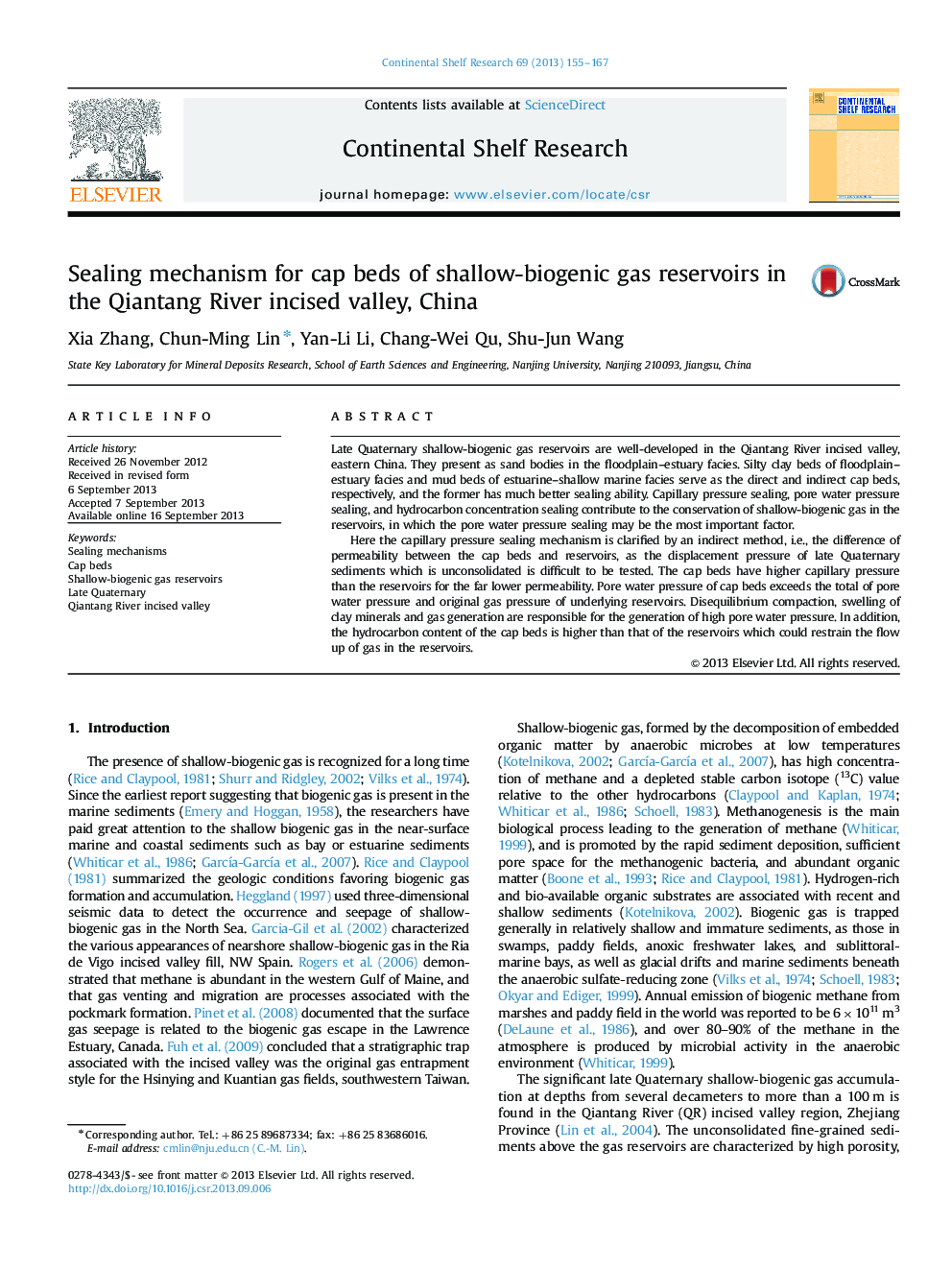| Article ID | Journal | Published Year | Pages | File Type |
|---|---|---|---|---|
| 4532044 | Continental Shelf Research | 2013 | 13 Pages |
•Sand bodies in the floodplain–estuary facies are the main gas reservoirs.•Silty clay beds of the floodplain–estuary facies serve as the direct cap beds.•Mud beds of the estuarine–shallow marine facies refer to the indirect cap beds.•We study the sealing mechanisms of cap beds that are different from the deep ones.•Sealing ability of the direct cap beds is better than that of the indirect ones.
Late Quaternary shallow-biogenic gas reservoirs are well-developed in the Qiantang River incised valley, eastern China. They present as sand bodies in the floodplain–estuary facies. Silty clay beds of floodplain–estuary facies and mud beds of estuarine–shallow marine facies serve as the direct and indirect cap beds, respectively, and the former has much better sealing ability. Capillary pressure sealing, pore water pressure sealing, and hydrocarbon concentration sealing contribute to the conservation of shallow-biogenic gas in the reservoirs, in which the pore water pressure sealing may be the most important factor.Here the capillary pressure sealing mechanism is clarified by an indirect method, i.e., the difference of permeability between the cap beds and reservoirs, as the displacement pressure of late Quaternary sediments which is unconsolidated is difficult to be tested. The cap beds have higher capillary pressure than the reservoirs for the far lower permeability. Pore water pressure of cap beds exceeds the total of pore water pressure and original gas pressure of underlying reservoirs. Disequilibrium compaction, swelling of clay minerals and gas generation are responsible for the generation of high pore water pressure. In addition, the hydrocarbon content of the cap beds is higher than that of the reservoirs which could restrain the flow up of gas in the reservoirs.
